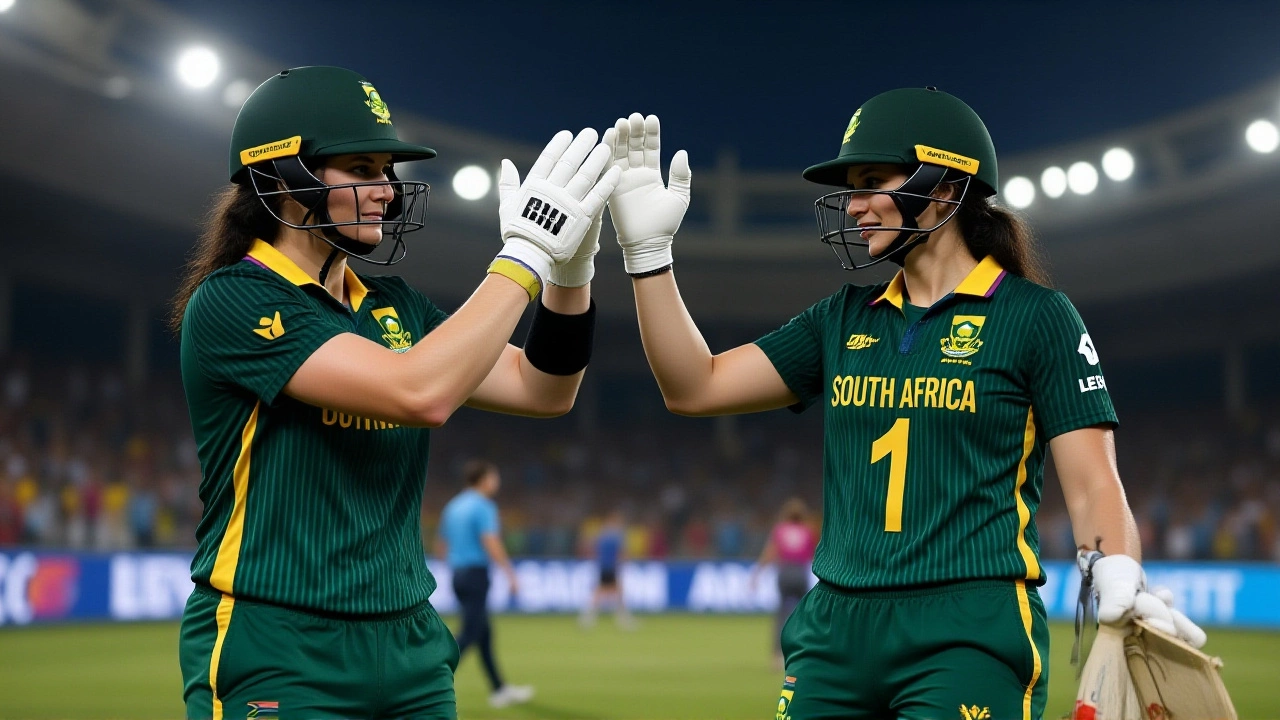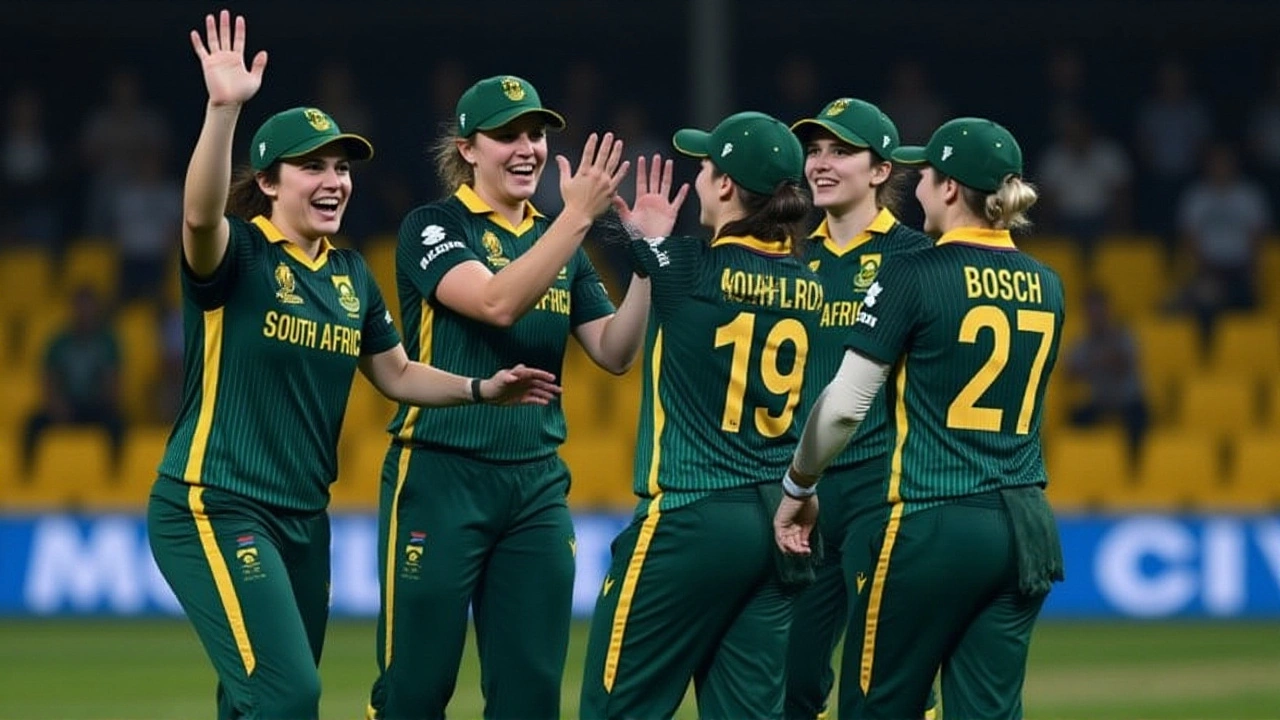On April 1, 2022, at Hagley Oval in Christchurch, New Zealand, Marizanne Kapp did something no woman had ever done in Women’s Cricket World Cup history: she took her 44th wicket, surpassing the legendary Cathryn Louise Fitzpatrick’s 17-year record. It wasn’t a flashy dismissal — just a crisp, low catch at mid-off — but the moment silenced the crowd and etched Kapp’s name into the annals of the game. The victim? Natalie Louise Sciver-Brunt, England’s star all-rounder, caught by Shabnim Ismail for 41 runs. The time: 1:17 PM NZDT. The stakes? A World Cup semi-final. The result? A new benchmark.
The Record That Lasted 17 Years
Before Kapp, the throne belonged to Cathryn Louise Fitzpatrick, the Australian pace queen who took 43 wickets across four World Cups from 1997 to 2005. Her average of 14.25 was monstrous for the era — fast, accurate, and relentless. She bowled with a warrior’s grit, often carrying Australia’s attack on her shoulders. But Kapp didn’t just match her. She exceeded her — by one wicket, yes, but also by the sheer span of her career. Fitzpatrick’s record stood since April 10, 2005, when she dismissed India’s Jhulan Goswami at Newlands. Kapp broke it on the exact same date, 17 years later, in a different hemisphere, under different skies.
The Numbers Behind the Legend
Kapp’s 44 wickets didn’t come in a flash. They were earned over 33 World Cup matches across five tournaments — 2009, 2013, 2017, and 2022. Her average? 22.04. Not as stingy as Fitzpatrick’s, but more consistent across eras of evolving batting power. In the 2022 tournament alone, she took 15 wickets — the most by any bowler in a single Women’s World Cup. Her best figures? 4 for 21 against Sri Lanka on March 26. Against England, she bowled 10 overs, conceded just 24 runs, and took 3 wickets. Her economy rate of 2.40? Tighter than most spinners. And she chipped in with 15 runs off 23 balls in South Africa’s innings — a reminder that she’s not just a bowler, but a complete player.
The People Behind the Moment
Kapp didn’t do this alone. In her post-match speech, she credited her wife, Dane van Niekerk, the former South Africa captain whose leadership helped shape the team’s culture. She thanked her coach, Hilton Moreeng, who’s been at the helm since 2016 and pushed for her to bowl more overs under pressure. And she acknowledged the institution behind her: Cricket South Africa. CEO Haroon Lorgat called it "a historic moment for South African sport," noting Kapp’s record spanned 1,095 days of World Cup cricket since her debut against Pakistan in Sydney in 2009.

Why This Matters Beyond the Stats
Women’s cricket has spent decades fighting for recognition. Kapp’s record isn’t just about numbers — it’s about visibility. She’s a Black South African woman who grew up in Port Elizabeth, playing on dusty grounds with second-hand gear. Her rise mirrors the slow, hard-fought progress of women’s cricket globally. The International Cricket Council didn’t just confirm the record — it celebrated it. Colin Graves, ICC Head of Events, said Kapp’s achievement "redefines excellence in women’s cricket" and will inspire the next generation across all 106 member nations. That’s the real impact. No longer are these feats footnotes. They’re milestones.
What Comes Next? The Final Push
At the time of the semi-final, Kapp needed three more wickets to become the first woman to reach 50 in World Cup history. The final against Australia on April 3, 2022, at the same Hagley Oval, was her chance. Only one man — England’s James Anderson — had ever reached 50 in any World Cup (men’s or women’s). Could she join him? The world watched. Though South Africa fell short in the final, Kapp’s legacy was already sealed. She didn’t need 50 to be great. She’d already rewritten the rulebook.

A Legacy Written in Wickets
Think about this: Kapp played in World Cups when women’s matches were often scheduled as warm-ups before men’s games. Now, she’s the headline. She’s the record. She’s the reason a 12-year-old in Cape Town picks up a cricket ball and dreams of taking 44 wickets. Fitzpatrick paved the way. Kapp built the monument. And now, the path is open for others to follow.
Frequently Asked Questions
How many World Cups did Marizanne Kapp play in to set the record?
Marizanne Kapp played in five Women’s Cricket World Cups: 2009, 2013, 2017, and 2022, with her 44th wicket coming in the 2022 tournament. She made her debut on March 7, 2009, against Pakistan in Sydney and played 33 matches across those tournaments, making her one of the most experienced bowlers in World Cup history.
Who held the record before Kapp, and how long did it stand?
Australian fast bowler Cathryn Louise Fitzpatrick held the record with 43 wickets, accumulated between the 1997 and 2005 World Cups. Her record stood for 17 years — from April 10, 2005, until April 1, 2022 — when Kapp surpassed it in the semi-final at Hagley Oval, making it the longest-standing individual record in Women’s World Cup history.
What made Kapp’s 2022 performance so special?
In the 2022 tournament, Kapp took 15 wickets — the most by any bowler in a single Women’s World Cup. She did so at an economy rate of 2.40, consistently breaking partnerships under pressure. Her best figures of 4 for 21 against Sri Lanka and her crucial 3-wicket haul against England in the semi-final were pivotal, showcasing her ability to perform when it mattered most.
How does Kapp’s record compare to men’s World Cup records?
Only one man has taken more than 50 wickets in World Cup history: England’s James Anderson, with 54. Kapp’s 44 wickets place her among the elite — the only woman to reach 40+ in the tournament. While men’s World Cups have more overs and matches, Kapp’s achievement is remarkable given the fewer games and lower media investment in women’s cricket during her career.
What role did Cricket South Africa play in Kapp’s success?
Cricket South Africa provided consistent support through coaching, training facilities, and team stability. Head coach Hilton Moreeng and captain Dane van Niekerk were instrumental in building a culture where Kapp could thrive. CEO Haroon Lorgat publicly credited the organization’s long-term investment in women’s cricket as foundational to her record-breaking career.
Will Kapp’s record likely be broken soon?
It’s unlikely in the near future. The next Women’s World Cup is in 2025, and bowlers rarely accumulate more than 10–12 wickets per tournament. To beat Kapp’s 44, a player would need to play at least four more World Cups and remain consistently dominant — a rare feat. Her combination of longevity, skill, and mental toughness may stand for decades.

